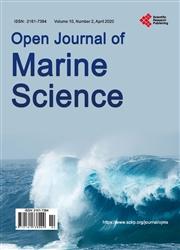Demographics and Population Dynamics Project the Future of Hard Coral Assemblages in Little Cayman
引用次数: 2
Abstract
Individual hard coral colonies from four representative reef sites around Little Cayman were surveyed yearly between 2010 and 2015, a period of non-disturbance between two elevated seawater temperature anomalies. Photographic censuses produced 7069 annual transitions that were used to describe the demographics (size class frequencies, abundance, area cover) and population dynamics under non-disturbance environmental conditions. Agariciids, Porites asteroides, and Siderastrea radians have replaced acroporids as the predominant massive corals. Recruitment rates were generally low (2), except for a fourfold recruitment pulse of S. radians that occurred in 2011. On average, 42% of coral recruits survived their first year but only 10% lived longer than four years. Temporal comparisons allowed correction factors to be calculated for in-situ methods that overestimate recruitment of colonies ≤2 cm in diameter and overlook larger colonies. Size class transitions included growth (~33%), stasis (~33%), partial mortality (10% - 33%), and whole colony mortality, which decreased with increasing colony size (typically 30 cm2). Transition matrices indicated that Little Cayman assemblages have declining hard coral populations (λ 150 cm2 surface areas, live area cover may remain relatively stable. Projection models indicated that downward population trends would be exacerbated even by mild disturbance (5% - 10% mortality) scenarios. The fate of hard corals on Little Cayman’s reefs was determined to be heavily dependent on the health and transitions of agariciid colonies. Conservation strategies that currently focus on restoration of Caribbean acroporids should be expanded to include agariciids, which were previously considered “weeds”.人口统计和人口动态预测小开曼岛硬珊瑚群落的未来
2010年至2015年间,每年对小开曼群岛周围四个代表性珊瑚礁点的单个硬珊瑚群落进行调查,这是两次海水温度升高异常之间的一段时间。摄影人口普查产生了7069个年度转换,用于描述人口统计数据(规模、阶级频率、丰度、面积覆盖率)和无干扰环境条件下的人口动态。琼脂类、星孔珊瑚和侧柱珊瑚已取代顶孔珊瑚成为主要的大型珊瑚。招募率普遍较低(2),除了2011年发生的四倍S.弧度的招募脉冲。平均而言,42%的新招募珊瑚存活了第一年,但只有10%的珊瑚存活时间超过四年。时间比较允许计算原位方法的校正因子,这些方法高估了直径≤2cm的菌落的募集,而忽略了较大的菌落。大小级别的转变包括生长(~33%)、停滞(~333%)、部分死亡率(10%-33%)和整个菌落死亡率,这些死亡率随着菌落大小(通常为30 cm2)的增加而降低。过渡矩阵表明,小开曼群岛组合的硬珊瑚种群数量正在下降(表面积λ150 cm2,生活区覆盖率可能保持相对稳定。预测模型表明,即使出现轻微干扰(5%-10%的死亡率),种群数量的下降趋势也会加剧。小开曼群岛珊瑚礁上硬珊瑚的命运在很大程度上取决于agaricid群落的健康和过渡。目前侧重于恢复加勒比肢端孢子虫的保护战略应该扩大到包括以前被认为是“杂草”的杀真菌。
本文章由计算机程序翻译,如有差异,请以英文原文为准。
求助全文
约1分钟内获得全文
求助全文

 求助内容:
求助内容: 应助结果提醒方式:
应助结果提醒方式:


